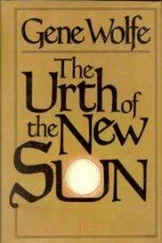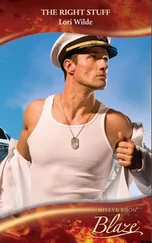Tom Wolfe - The Right Stuff
Здесь есть возможность читать онлайн «Tom Wolfe - The Right Stuff» весь текст электронной книги совершенно бесплатно (целиком полную версию без сокращений). В некоторых случаях можно слушать аудио, скачать через торрент в формате fb2 и присутствует краткое содержание. Жанр: Современная проза, на английском языке. Описание произведения, (предисловие) а так же отзывы посетителей доступны на портале библиотеки ЛибКат.
- Название:The Right Stuff
- Автор:
- Жанр:
- Год:неизвестен
- ISBN:нет данных
- Рейтинг книги:3 / 5. Голосов: 1
-
Избранное:Добавить в избранное
- Отзывы:
-
Ваша оценка:
- 60
- 1
- 2
- 3
- 4
- 5
The Right Stuff: краткое содержание, описание и аннотация
Предлагаем к чтению аннотацию, описание, краткое содержание или предисловие (зависит от того, что написал сам автор книги «The Right Stuff»). Если вы не нашли необходимую информацию о книге — напишите в комментариях, мы постараемся отыскать её.
The Right Stuff — читать онлайн бесплатно полную книгу (весь текст) целиком
Ниже представлен текст книги, разбитый по страницам. Система сохранения места последней прочитанной страницы, позволяет с удобством читать онлайн бесплатно книгу «The Right Stuff», без необходимости каждый раз заново искать на чём Вы остановились. Поставьте закладку, и сможете в любой момент перейти на страницу, на которой закончили чтение.
Интервал:
Закладка:
And the men went through it all willingly! Without a snigger! The brass's passion for the astronaut business was nothing compared to that of the young pilots themselves. Edwards had always been the precise location on the map of the apex of the pyramid of the right stuff itself. And now it was just another step on the way up. These boys were coming through Chuck Yeager's prep school so they could get a ticket to Houston.
The glamour of the space program was such that there was no longer any arguing against it. In addition to the chances for honor, glory, fame, and the celebrity treatment, all the new hot dogs could see something else. It practically glowed in the sky. They talked about it at beer call at every Officers Club at every air base in the land. Namely, the Astronaut Life. The youngsters knew about that, all right. It existed just over the rainbow, in Houston, Texas… the Life contract… $25,000 per year over and above your salary… veritable mansions in the suburbs, custom-designed… No more poor sad dried-up asbestos-shingle-roof clapboard shacks rattling in the sandstorms… free Corvettes… an enormous free lunch from one side of America to the other, for that matter… and the tastiest young cookies imaginable! One had only to reach for them!… The vision of all the little sugarplums danced above the mighty ziggurat… You bet! A veritable Fighter Jock's Forbidden Dream of the goodies had been brought to life, and all these young hot dogs looked upon it like people who believed in miracles…
It really made some of the older pilots shake their heads. If a man got a piece of tail every now and then, the world wasn't going to come to an end. But to dream of a goddamned aerial nookie circus… What was worse, however, was the Life contract. The way any true Blue-Suiter saw it, to let an experimental test pilot exploit his job commercially was only asking for trouble. If a man had the opportunity to fly machines with incalculable millions of dollars' worth of resources and facilities and man hours built into them, if they put him in a position to make history—that was more than enough compensation.
Yeager had flown the X-1 at straight pay, $283 a month. The Blue Suit!—that was enough for him. The Blue Suit had brought him everything he had in this world, and he asked for nothing else.
And what would all of that mean to these boys, even if someone said it? Not a hell of a lot, probably. Not even the fact that the X-15 project was in its finest hour, right here, for all to see, affected the new order of things. In June the X-15, with Joe Walker at the controls, had achieved Mach 5.92, or 4,104 miles per hour, which brought the project close to the optimum speed—"in excess of Mach 6"—it had been aiming for. In July Bob White had flown to 314,750 feet, or 59.6 miles, 9.6 miles into space (50 miles was now officially regarded as the boundary line) and well above the project's goal of 280,000 feet. These and many less spectacular flights of the X-15 were bringing back data concerning heat buildup (from air friction) and stability upon which the design of all the supersonic and hypersonic aircraft of the future, commercial and military, would be based. The X-15's XLR-99 rocket had 57,000 pounds of thrust. The Mercury-Redstone had 78,000; the Mercury-Atlas had 367,000 pounds; but soon there would be the X-20, and the X-20 would have a Titan 3 rocket's 2.5 million pounds of thrust, and it would be the first ship to go into orbit with a pilot at the controls from beginning to end, a pilot who could land it anywhere he wanted, eliminating the tremendous expense and risk of the Mercury ocean-rescue operations, which involved carriers, spotter planes, helicopters, frogmen, and backup vessels strung halfway around the world.
Yeager's students had a chance to experience something close to what such space piloting would be like. They went "booming and zooming" in the F-104. The F-104 was a fighter-interceptor that had been built to counter the MiG-21, which the Russians were known to be developing. The F-104 was fifty feet long and had two razor-thin wings, each only seven feet long, set far back on the fuselage, close to the tail assembly. The pilot and his guy-in-back were in two seats way up in the nose. The F-104 was built for speed in combat, period. It could climb at speeds in excess of Mach 1 and it could achieve Mach 2.2 in level flight. The faster it went, the steadier it was; it was unstable at low speeds, however, and oversensitive to the controls, with an evil tendency to pitch up and then snap into rolls and spins. At glide speed it seemed to want to fall like a length of pipe. After practicing on an F-104 simulator, Yeager's students would take the ship up to 35,000 feet and open her up to Mach 2 (the boom), then aim her up at about forty-five degrees and try to poke a hole in the sky (the zoom). The g-forces slammed them back in their seats and they shot up like shells, and the pale-blue desert sky turned blue-black and the g-forces slid off and they came sailing over the top of the arc, about 75,000 feet up, silent and weightless—an experience like unto what the brethren themselves had known!—
—and these boys thought that was neat. Maybe it would be nice to fly the X-15 or the X-20, if you didn't make astronaut…
Yeager liked to take the ARPS students up for mock dogfights, hassling, just to… keep the proficiency up… Few of the lads had ever been in combat and they knew little about the critical tolerances of fighter aircraft during violent maneuvers. They knew where the outside of the envelope was, but they didn't know about the part where you reached the outside and then stretched her a little… without breaking through… Yeager waxed their tails with regularity, but they took that in stride. These days the way to the top—meaning the road to test-pilot astronaut—involved being very good at a lot of things without necessarily being "shit-hot," to use the beer-call expression, at anything. A balance of pilot skills and engineering; that was the ticket. Joe Walker's backup pilot in the X-15 project, Neil Armstrong, was typical of the new breed. A lot of people couldn't figure out Armstrong. He had a close blond crew cut and small pale-blue eyes and scarcely a line or a feature in his face that you could remember. His expression hardly ever changed. You'd ask him a question, and he would just stare at you with those pale-blue eyes of his, and you'd start to ask the question again, figuring he hadn't understood, and— click —out of his mouth would come forth a sequence of long, quiet, perfectly formed, precisely thought-out sentences, full of anisotropic functions and multiple-encounter trajectories, or whatever else was called for. It was as if his hesitations were just data punch-in intervals for his computer. Armstrong had been preparing for an X-15 launch from the Smith's Ranch dry-lake bed last year when Yeager, who was director of flight test operations, told him the lake bed was still too muddy from the rains. Armstrong said the meteorological data, considering the wind and temperature factors, indicated the surface would be satisfactory. Yeager received a call from NASA asking him if he would take a small plane over to the lake bed and make a ground inspection. "Hell, no," said Yeager. "I've been flying over these lakes for fifteen years, and I know it's muddy. I'm not going to be responsible for disabling an Air Force plane." Well, would he fly a NASA plane up there? Hell, no, said Yeager; he didn't want that on his record, either. It was finally arranged that he would fly up there backseat, with Armstrong at the controls and therefore responsible for the mission. As soon as they touched down, Yeager could tell that the mud was going to suck up the landing gears like a couple of fence posts, which it did. Now they were hopelessly mired in the muck, and a range of hills blocked radio contact with the base. "Well, Neil," said Yeager, "in a few hours it'll be dark, and the temperature's going down to zero, and we're two guys standing out here in the mud wearing windbreakers. Got any good ideas?" Armstrong stared at him, and the computer interval began, and it ended, and nothing came out. A rescue team from the base, alerted by the loss of radio contact, retrieved them before nightfall—and brought back the story, which entertained the old-timers for a few days.
Читать дальшеИнтервал:
Закладка:
Похожие книги на «The Right Stuff»
Представляем Вашему вниманию похожие книги на «The Right Stuff» списком для выбора. Мы отобрали схожую по названию и смыслу литературу в надежде предоставить читателям больше вариантов отыскать новые, интересные, ещё непрочитанные произведения.
Обсуждение, отзывы о книге «The Right Stuff» и просто собственные мнения читателей. Оставьте ваши комментарии, напишите, что Вы думаете о произведении, его смысле или главных героях. Укажите что конкретно понравилось, а что нет, и почему Вы так считаете.











